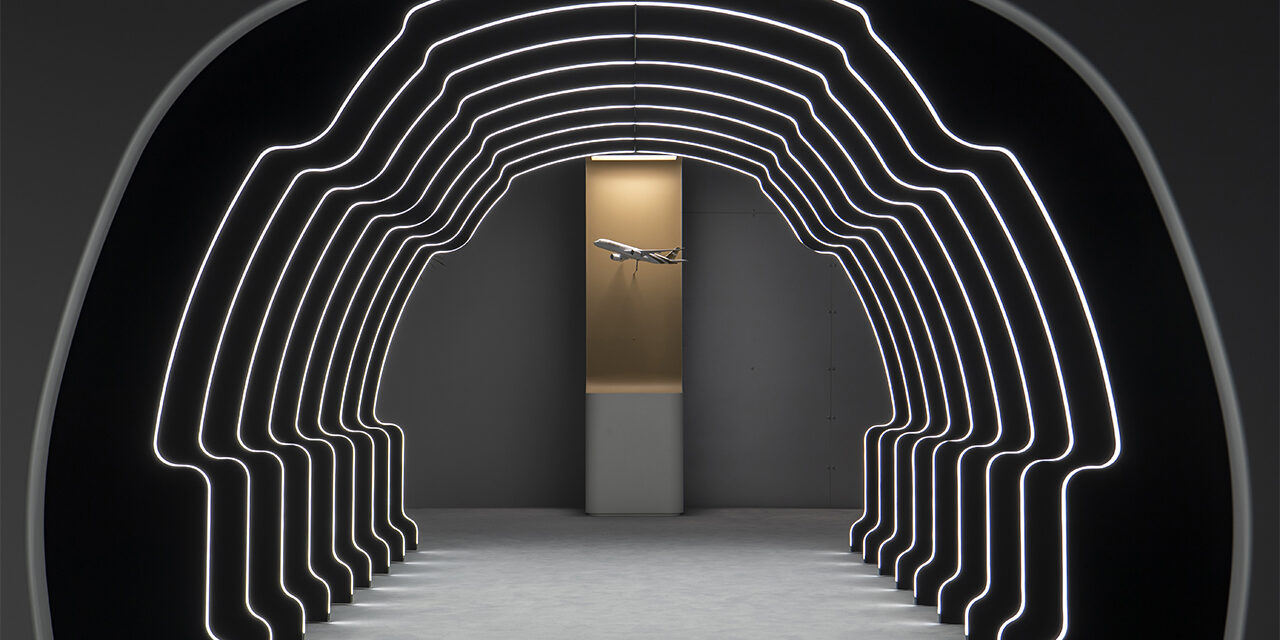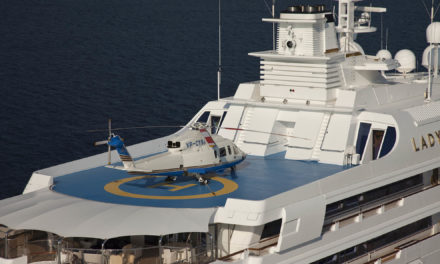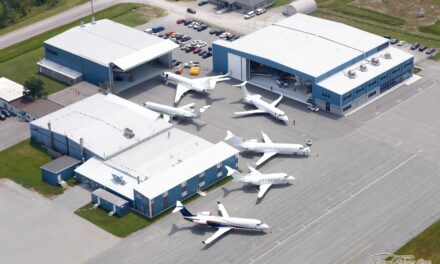By Fred Vergnères
A new step in the market development of the ACJ TwoTwenty, the launch of the ACJ Creative Studio at the last Ebace show, demonstrates the strategic importance that Airbus is placing on its small jet. Here’s a look back at an exclusive visit to this showroom level in the heart of the Airbus facilities in Toulouse.
The ACJ TwoTwenty, launched in 2020 by Airbus, has undoubtedly reshuffled the deck in the business aviation sector. The ACJ TwoTwenty has attracted a whole new clientele, more accustomed to the traditional business aircraft manufacturers such as Bombardier, Dassault and Gulfstream. However, if the assets seem to meet the current market demands, Airbus could not be satisfied with selling its aircraft without an even more targeted and personalized approach.
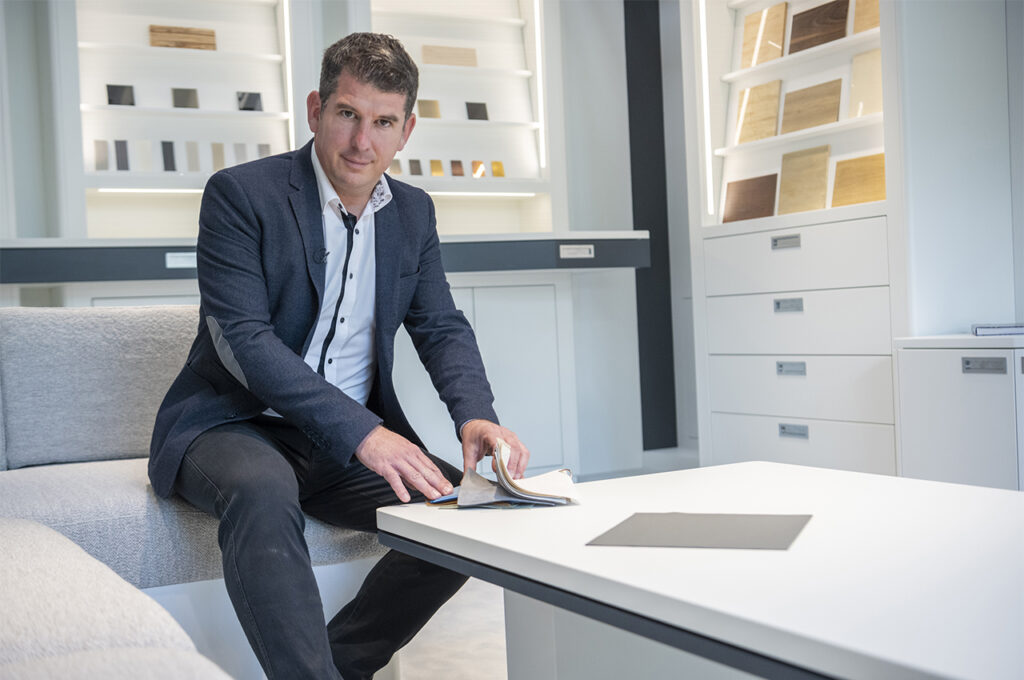
Having been used for decades to ultra-customization of its commercial aircraft in a market shared exclusively with its direct competitor Boeing, the industrialization of the ACJ TwoTwenty’s design process is seen internally, but also by the competition, as a real revolution. With its new aircraft, the aircraft manufacturer has turned to the industrialization of the cabin space, relying on the expertise of its design studio led by Sylvain Mariat and a renowned industrial partner, Comlux. With this concept, the European aircraft manufacturer has never been so ideologically close to other aircraft manufacturers in the business aviation sector. And so quick to attract their most loyal customers.
A journey of discovery
The launch of the ACJ Creative Studio by the sales, marketing and design teams is therefore a real asset for the aircraft’s market development. While the idea of a showroom is not new, Airbus Corporate Jet has not simply copied what others are doing. The concept was built around an immersion, or even further, a real “initiatory” journey built not only around the customer but also by him. If the arrival on the Toulouse site of the manufacturer already carries in itself an exceptional historical connotation, the first steps at the entrance of the ACJ Creative Studio transport the customer in a hushed universe. Close to the “world of silence“, the first steps are made according to the various information and key figures related to the assets of the ACJ TwoTwenty. There is no room for chance, but rather a detailed review of the jet, reminding us, for example, that the aircraft’s range allows it to connect the world’s major capitals and fly 5,650 nm (10,463 km) in one go in 12 hours.
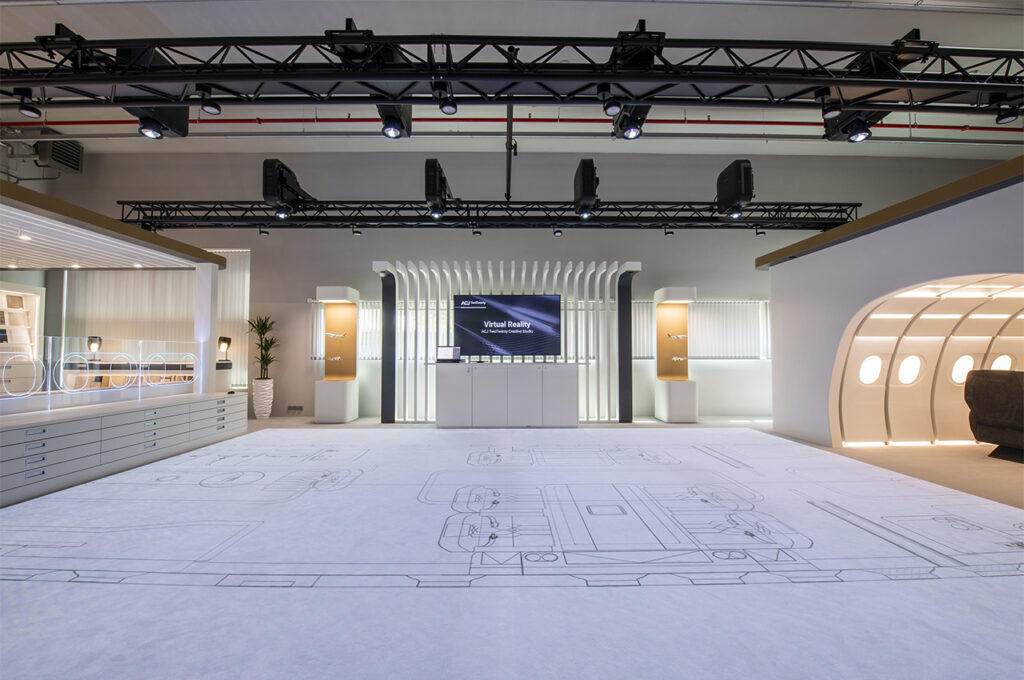
On this “first stage” Airbus also mentions the advantages in habitability, comfort and altitude felt in the cabin, while emphasizing the operational aspect and the savings linked to the commonality of the parts with the airlines. In addition, the aircraft manufacturer does not forget to mention that its aircraft is made of 40% composite material, reducing the total weight of the aircraft and therefore its operating cost.
Immersion
Once these initial key messages have been identified, the “traveler” will continue the adventure with a first “physical” and three-dimensional approach. To fully understand the width and height of the cabin, which are 3.28 and 2 meters respectively, Airbus has developed a system that compares the A220’s cross-section to its main competitors. In this case, Airbus can adapt its mobile cross sections with the dimensions identified on the two current competing aircraft, the Bombardier Global 7500 and the future Falcon 10X under development by Dassault. This visual game aims to identify the space and the passageway according to the type of seat arrangement. On this point, Airbus Corporate Jet points out that the seats offered with the
interiors are 22 inches wide, compared with 18 inches for the direct competition. This important distinction allows ACJ to differentiate itself on the layout by offering the possibility to integrate a 4+2 “club“. At this stage of the visit, which has only just begun, the guest can already begin to identify with the cabin space before being immersed in a second, totally new visual experience. While the ACJ TwoTwenty’s cabin can count on a total of 73 m2 of space, twice as much as the competition, Airbus needed some innovative features to make the customer discover the “spatial” capabilities of its aircraft. The immersion is done on the ground by the projection section by section of the cabin of the ACJ TwoTwenty at scale 1.
It is indeed impossible to display the 7 meters length of the fuselage for technical reasons. On the other hand, the aircraft manufacturer, obviously took care for this stage, to develop the space of its cabin, not only by displaying the various possible configurations but also by superimposing them on the competing cabins. « These projections on the floor allow the customer to visualize “in situ” the cabin characteristics and the placement of the different elements, » says Sylvain Mariat, director of ACJ Creative Design & Concept. « For example, we can display a king-size bed so that the client can measure and reinterpret the space of the room by integrating this element. »
If the cabin length of the TwoTwenty, which can accommodate up to 6 zones, against 4 in the competitors is nevertheless clearly visible during this visualization, the future customer is also able to identify the impact of the wing area of his aircraft on the ground which is identical to that of a Falcon 10X. The cargo load is often mentioned, but is not often highlighted. Here again, the latest ACJ is an exception, since the twin-engine aircraft can carry up to 40 pieces of luggage (up to 100 depending on the number of ACTs installed) in the hold and about 20 in the cabin.
Twilight Zone
At this stage of the immersion, the marketing teams have imagined a “hook” through the real world. Descending from the Cloud, where the information is stored, the passenger is invited to get off the plane to reclaim the world of materials by settling into the lounge designed by the Creative Studio teams. This space, a sort of friendly decompression chamber, which mirrors the interior atmosphere and the main sofa of the ACJ TwoTwenty, allows the guest to regain his feet and reposition his attention on the discovery of new elements. The invitation to travel is made concrete here by the discovery of the different materials proposed by Airbus to harmonize its interior, taking as a guideline the four interior trends originally proposed by Airbus for its aircraft: Avant-Garde, Timeless and Quintessence, without forgetting the special edition created by the artist Kongo.
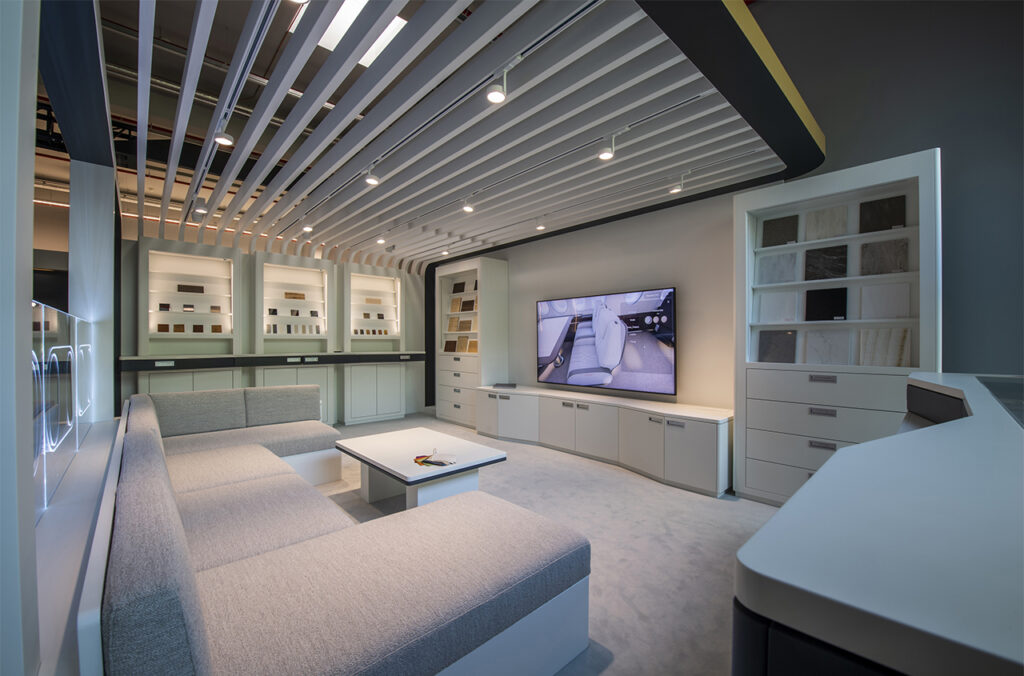
However, it is also possible to go off the beaten track and create your own universe via material samples and an online configurator that allows for more than a hundred combinations. The personal selection of materials and colors allows the customer to immerse himself as closely as possible in his interior project, just as is done for his home. Once the selection is made, the passenger is invited to join a « Twilight Zone » that the creator of the eponymous series, Rod Serling, would not have denied. This last step, of an exclusively immersive journey, is in fact an essential step for the future customer since it allows him to associate and visually concretize his choices of layouts, materials and colors. To do so, Airbus Corporate Jet has virtually recreated the cabin of its TwoTwenty.
The 3d immersion in the cabin is done by adopting a virtual reality headset. The experience is striking and beyond the simple contemplation of the cabin universe that can be walked through (in a predefined area). This virtual world does not forget to be interactive since it is also possible to “play” on and with certain elements.
It took the time of a visit to let the passenger immerse himself in his project. It must be said that the ACJ Creative Studio plays with all the senses of the guests to propose them to live, develop, try and view the whole interior of their ACJ TwoTwenty. The bet is thus successful for Airbus which with its studio finalizes the spirit developed around its TwoTwenty concept. While the ACJ Creative Studio was specially developed for the small jet, ACJ is not barred from using it for the rest of the range, as Sylvain Mariat points out: « The Airbus teams have developed a tool that is in line with the ACJ TwoTwenty concept, but which can be adapted to the rest of the range. » The fact remains that this studio, which mixes the real and the virtual, is an essential part of the ACJ TwoTwenty concept and of the aircraft’s growing sales in the business aviation market.

